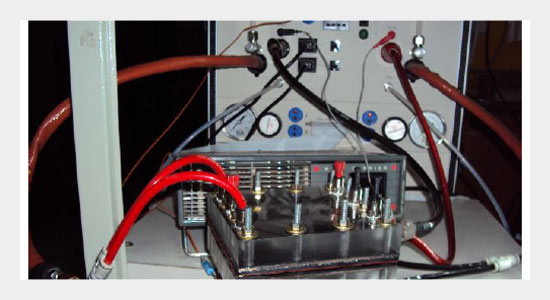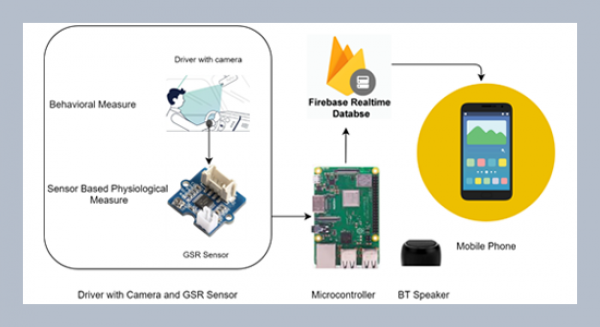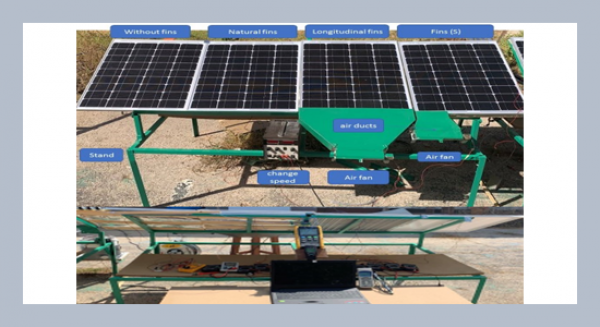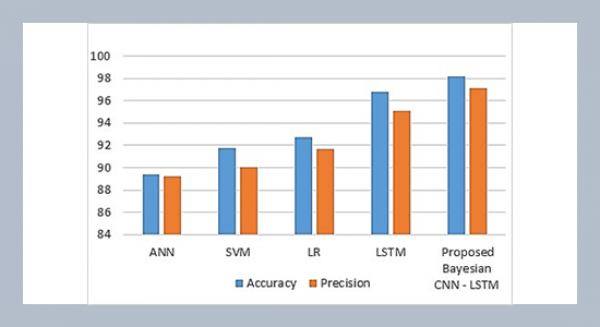B. Sreenivasulua*, G. Vasub, V. Dharma Raoc, and S. V. Naidud aDepartment of Chemical Engineering, G.V.P College of Engineering, Visakhapatnam, India
bFuel cell and Renewable Energy, BHEL(R&D), Hyderabad, India
cDepartment of Mechanical Engineering, G.V.P College of Engineering, Visakhapatnam, India
dDepartment of Chemical Engineering, Andhra University, Visakhapatnam, India
Download Citation:
|
Download PDF
The purpose of this study is to examine the performance of a PEM fuel cell at different back pressures and channel geometries. Experiments are conducted in BHEL (R&D), Hyderabad with a single cell to study the effect of back pressure created in the hydrogen flow channel on fuel cell performance. The outlet tube from the hydrogen flow channel is immersed in water to a specified depth in a graduated cylindrical container. The back pressure created in the channel depends on the depth to which the outlet tube is immersed in water in the cylinder. The hydrogen bubbles through water to the exit. The excess pressure induced on the fluid helps in forcing the gas through the GDL to the catalyst surface. The voltage and power are measured as functions of current density at different back pressures in the hydrogen flow channel and with different flow fields. The rate of power generation depends on the rate of diffusion of hydrogen through the gas diffusion layer (GDL). After diffusing through GDL hydrogen splits into hydrogen ion and electron on the surface of the catalyst layer. Hence an increase in voltage or power is obtained at a specified current density. Experiments are conducted with three different flow field plates, viz., for 4-Serpentine flow, interdigitated flow and dual inlet single outlet flow. Experimental data have been obtained at three different back pressures with each flow field plate. The three different back pressures are created by immersing the tube in the cylinder at three different depths. An increase in power production is obtained clearly with an increase in back pressure. Further the augmentation in voltage is the highest in the case of serpentine flow.ABSTRACT
Keywords:
4-Serpentine flow channels; back pressure; dual inlet single outlet; fuel cell; PEM.
Share this article with your colleagues
[1] Hawang, J. J. and Hawang, H. S. 2002. Parametric studies of a double-cell stack of PEMFC using GrafoilTM flow-field plates. Journal of Power Sources, 104: 24-32.REFERENCES
[2] Wang. L., Husar, A., Zhou. T., and Liu, H. 2003. A Parametric study of PEM fuel cells performances. International Journal of Hydrogen Energy, 28: 1263-1272.
[3] Wang, L. and Liu, H. 2004. Performance studies of PEM fuel cells with interdigitated flow field. Journal of Power Sources, 134: 185-196.
[4] Hermann, A., Chaudhuri, T., and Spagnol, P. 2005. Bipolar plates for PEM fuel cells: A review. International Journal of Hydrogen Energy, 30,12: 1297-1302.
[5] Yan, W. M., Yang, C. H., Soong, C. H., Chen, F., and Mei, S. C. 2006. Experimental studies on optimal operating conditions for different flow field designs of PEM fuel cells. Journal of Power Sources, 160: 284-292.
[6] Maher, A. R., Sadiq, Al-Baghdad, Haroun, A. K., and Shahad. Al-Janabi, 2007. Influence of the design parameters in a proton exchange membrane (PEM) fuel cell on mechanical behavior of the polymer membrane. Energy & Fuels, 21: 2258-2267.
[7] Wang, X. D., Duan, Y. Y., Yan, W. M., and Peng, X. F. 2008. Local transport phenomena and cell performance of PEM fuel cells with various serpentine flow field designs. Journal of Power Sources, 175: 397-407.
[8] Jeon, D. H., Greenway, S., Shimpalee, S., and Van, Zee, J. W. 2008. The effect of serpentine flow-field designs on PEM fuel cell performance. International Journal of Hydrogen Energy, 33, 3: 1052-1066.
[9] Kuo, J. K., Yen, T. S., and Chen, C. K. 2008. Improvement of performance of gas flow channel in PEM fuel cells. Energy Conversion and Management, 49, 10: 2776-2787.
[10] Jack, R. F., Kuo, M. C., John, A. T., and Andrew, M. 2008. Herring The use of the heteropoly acids, H3PMo12O40 and H3PW12O40, for the enhanced electrochemical oxidation of methanol for direct methanol fuel cells. Electrochimica Acta, 53, 14: 4927-4933.
[11] Jason, P. K., Xia, Wang, Joan, Liu, Zhongying, S., and Laila, G. 2009. Investigation of bio-inspired flow channel designs for bipolar plates in proton exchange membrane fuel cells. Journal of Power Sources, 188, 1: 132-140.
[12] Hamilton, P. J. and Pollet, B. G. 2010. Polymer Electrolyte Membrane Fuel Cell (PEMFC) Flow Field Plate: Design, Materials and Characterisation. Fuel Cells, 10, 4: 489-509.
[13] Kumar, P. M. and Kolar, A. K. 2010. Effect of cathode channel dimensions on the performance of an air-breathing PEM fuel cell. International Journal of Thermal Sciences, 49: 844-857.
ARTICLE INFORMATION
Received:
2012-02-09
Revised:
2012-04-19
Accepted:
2012-04-30
Available Online:
2013-03-01
Sreenivasulu, B., Vasu, G., Rao, V.D., Naidu, S.V. 2013. Effect of back pressure and flow geometry on PEM fuel cell Performance-An experimental study. International Journal of Applied Science and Engineering, 11, 1–11. https://doi.org/10.6703/IJASE.2013.11(1).1
Cite this article:















